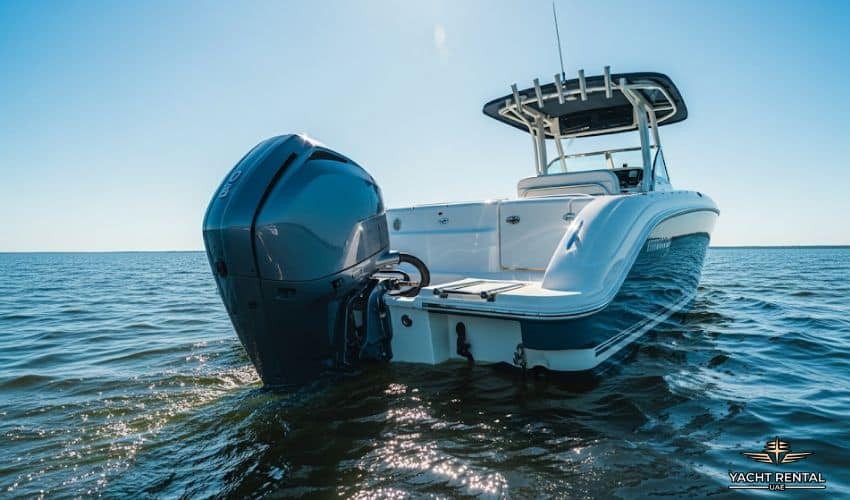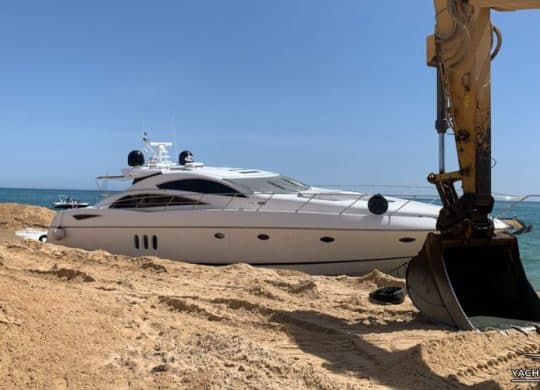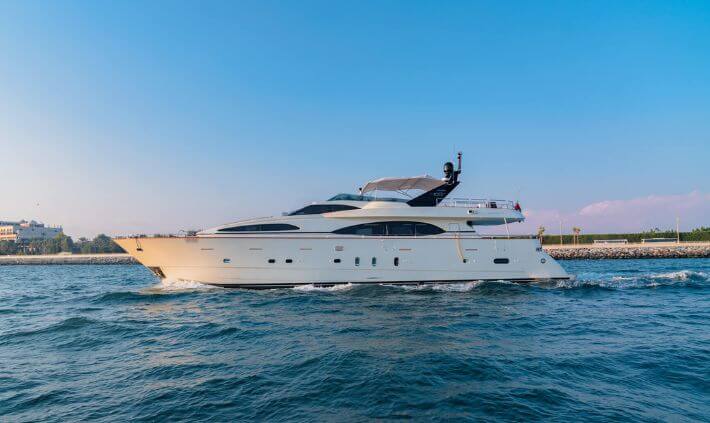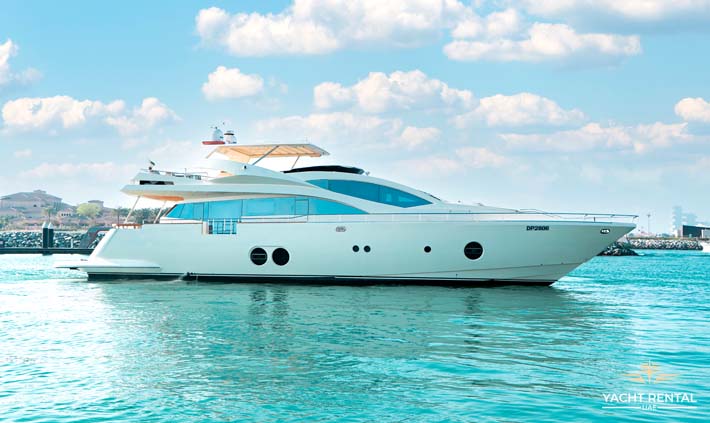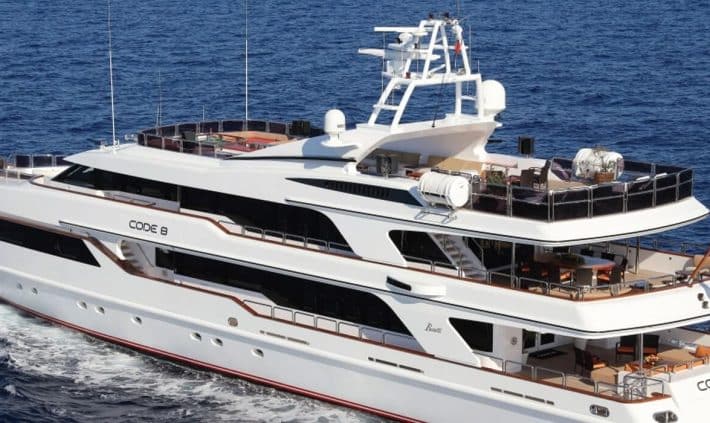The Transom’s Role on a Boat
Its primary jobs are to:
- Provide Structural Support: It connects the two sides of the hull, creating a rigid, strong structure that resists twisting forces.
- Mount the Engine: On most powerboats, the transom holds the stress and thrust of one or more outboard motors. On inboard boats, it is where the rudder is often mounted.
- Prevent Water Intrusion: It acts as a dam, keeping water from swamping the boat from the rear, known as the stern.
Common Transom Designs
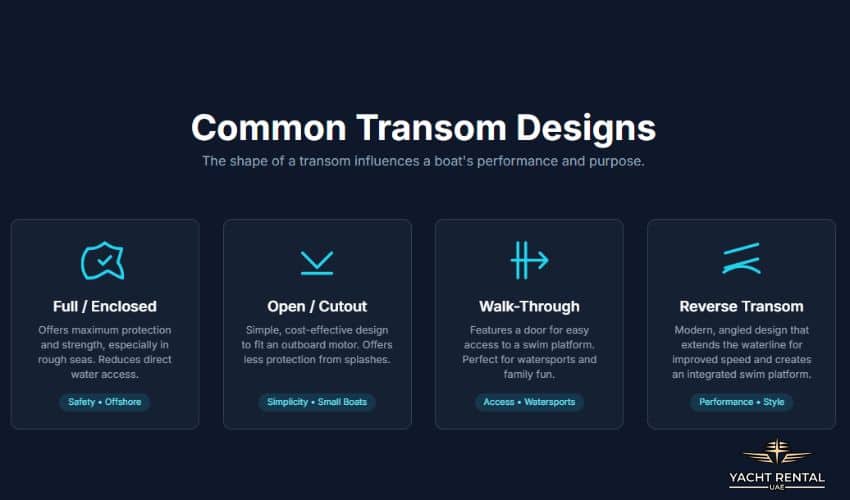
The shape of a transom directly influences a boat’s function and suitability for certain activities.
Full or Enclosed Transom
Found on many offshore fishing and larger cruising boats, a full transom extends from the bottom of the boat to the top of the gunwales without any cutouts. This design offers maximum strength and safety in rough seas by providing the best protection against following waves. Its main drawback is reduced access to the water.
Open or Cutout Transom
Many smaller boats, like Jon boats and some skiffs, have a cutout in the transom. This lowers the height in one section to accommodate a specific outboard motor shaft length. While this design is simple and cost-effective, it offers less protection from water splashing into the boat.
Walk-Through Transom
A popular feature on family-oriented boats, a walk-through transom includes a doorway or removable section. This provides easy access to a swim platform, making it ideal for watersports and swimming. The design requires careful engineering to maintain structural integrity around the opening.
Reverse Transom
A reverse transom angles from the deck down towards the water. This modern design extends the boat’s waterline, which can slightly improve speed and stability. It also creates a built-in swim platform, adding to its popularity on recreational boats.
Transom Height and Your Motor
Transom height is the distance from the bottom of the hull to the top of the transom where the engine mounts. This measurement is critical because it dictates the required shaft length of your outboard motor. Using the wrong shaft length will severely impact performance and can damage the motor.
| Transom Height | Required Motor Shaft Length | Common Boat Types |
| 15 inches | Short Shaft | Small Jon boats, tenders, inflatables |
| 20 inches | Long Shaft | Most bay boats, center consoles, and runabouts |
| 25 inches | Extra-Long Shaft | Offshore boats and boats with brackets |
| 30 inches | Ultra-Long Shaft | Larger and Specialized offshore vessels |
Source: Data compiled from manufacturer specifications, including Mercury Marine and Yamaha Outboards.
Transom Construction Materials
The material inside your transom is vital to its longevity.
- Plywood Core: For decades, marine-grade plywood encased in fiberglass was the standard. It is strong and inexpensive. Its critical weakness is vulnerability to rot if water penetrates the fiberglass shell through mounting holes for engines, transducers, or tie-downs.
- Composite Core: Modern boats increasingly use high-density, closed-cell foam or composite materials like Coosa Board. These materials are lighter than plywood and will not rot. The main disadvantage is a higher manufacturing cost, which affects the boat’s purchase price.
How to Spot a Failing Transom
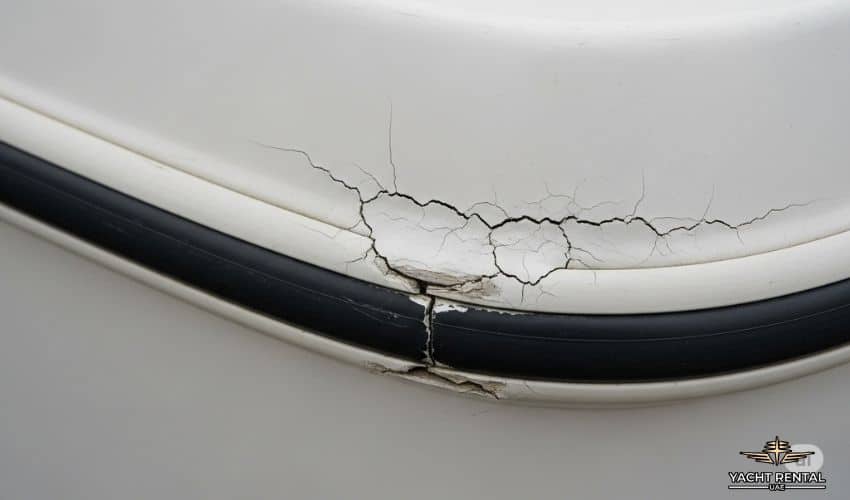
A compromised transom is a serious safety risk and can be one of the most expensive repairs on a boat. You can check for problems with these steps:
- Look for Cracks: Examine the corners of the transom, both inside and out. Spider-web-like “gelcoat crazing” is one thing, but deep, structural cracks are a major red flag.
- Check for Flex: With the boat out of the water, try to move the outboard motor up and down.
- Watch the transom closely: Any flexing, bowing, or movement separate from the rest of the hull indicates a problem.
- Tap and Listen: Use a plastic mallet or the handle of a screwdriver to tap around the transom. A healthy, solid transom will produce a sharp “thud.” A rotten core will sound dull, hollow, or soft.
- Inspect Sealants: Look at the sealant around the engine mounting bolts, drain plugs, and any other fittings. Cracked or missing sealant is a common entry point for water that leads to internal rot.
Also Read: What is the Stern of a Boat
Frequently Asked Questions (FAQ)
What is a transom saver and do I need one?
A transom saver is a support arm that connects your outboard motor’s lower unit to your boat trailer. It helps brace the engine during trailering, reducing stress on the transom from bumps and vibration. For any boat with a large outboard that is trailered frequently, a transom saver is a wise investment to protect the transom’s structural integrity.
How do you check a used boat’s transom for rot?
Start with a visual inspection for cracks and poor sealant around all bolts. Then, apply the “flex test” by lowering the outboard and putting your weight on it; watch for any movement at the engine mounts. Finally, perform the “tap test” with a mallet, listening for dull sounds that suggest a compromised core. If you suspect any issues, a professional marine survey is essential.
Can you mount an engine on any transom?
No. A transom must be designed to handle the weight, torque, and thrust of an outboard motor. Boats not designed for a motor, like kayaks or canoes, have transoms that are simply the back end of the hull. Adding a motor to a boat not built for one can cause catastrophic failure. Always adhere to the boat’s maximum horsepower rating specified by the manufacturer.

